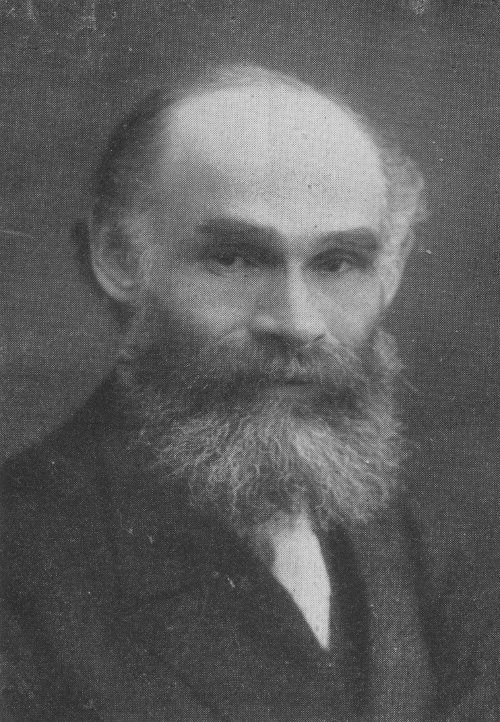Reaching Orthodox Jews in Great Britain with the gospel

Traditionally, Orthodox Jews have been most hostile to the gospel. With their distinctive black garb, sidelocks and luxuriant facial hair, the Hasidim have become Jewish cultural icons. Tradition and a history of suffering at the hands of the professing church have hardened this conspicuous minority against any attempt on the part of Christians to win them for the Saviour. It is from within this community that strenuous counter-attacks have been launched to dissuade other Jews from even considering the claims of Jesus Christ. And yet, in eastern Europe in the last century, it was from among the Orthodox that significant numbers came to trust in the Messiah. Alfred Edersheim, David Baron and Adolph Saphir were all from religiously Orthodox Jewish backgrounds.
‘Mental’ missionaries
Until the eighties, apart from the work of a few brave individuals, little in the way of evangelism had taken place in the major centres of Hasidic life in this country, that is, in places such as Gateshead, Broughton Park in Manchester and Stamford Hill in London. In the mid-eighties, however, a low-key outreach began in Manchester when the text of Isaiah 53, presented in Hebrew, Yiddish and English, was circulated in the Broughton Park area. Believing the leaflet to be a Christian tract, Orthodox men threatened distributors with physical harm if the leaflets were not handed over, and the local Jewish Telegraph carried a front-page report, ‘Mystery Missionary Leaflets in Broughton Park’. Writing in the paper, one columnist referred to ‘a lunatic conversion pamphlet’, insisting that those responsible for the leaflet were ‘individuals with mental problems’.

Some ten years ago a fresh phase of regular, organized outreach commenced in Stamford Hill, London, and was immediately met by vigorous resistance. Following protests from the Orthodox, local councils cancelled a Christian lecture at a public library and a showing of the film, The Hiding Place. Though there have been incidents involving a bucket of water being thrown at evangelists and a physical assault made on a Jewish Christian, opposition has mainly taken the form of harangues and harassment.
Stamford Hill is the base of the influential Lubavitch Chabad movement, one of the most energetic of Orthodox sects. Some fascinating developments have taken place within this movement in recent years, particularly with regard to their interpretation of the fifty-third chapter of Isaiah. Since the time of Rabbi Solomon ben Isaac, in the eleventh century, Jewish interpreters have explained the passage in terms of their nation’s sufferings at the hands of the Gentiles. Rabbi Shmuel Arkush, head of the anti-missionary organization ‘Operation Judaism’, articulates this view when he writes, ‘The whole of Isaiah 53 is more applicable to the Jews of Auschwitz than Jesus of Nazareth.’

Menachem ‘the Messiah’
Until his death in June 1994 the Lubavitch sect was led by the charismatic ‘Rebbe’, Menachem Mendel Schneerson. In the Rebbe’s final months a number of sect members, using the terminology of Isaiah 53, proclaimed their leader ‘King Messiah’. The zeal and ingenuity of the Rebbe’s spin doctors knew no bounds. When Schneerson lost his ability to speak due to a severe stroke, the event was explained as a fulfilment of Isaiah 53:7, ‘As a sheep before its shearers is silent, so he opened not his mouth.’
Four years after his death, some of Schneerson’s disciples still live in the hope that he will rise from the dead. Stories of his intervention from beyond the grave through dreams and visions do the rounds in Lubavitch pamphlets. But since the Rebbe’s death there has been a notable softening of attitudes towards Christian workers in the Lubavitch heartland. It seems more than likely that the death of the man many hoped was the redeemer of Israel and that exposure to the most transparent and lucid Old Testament prophecy relating to Christ have left many Orthodox Jews asking the 2,000-year-old question, ‘Of whom does the prophet speak?’

Something completely different
Although many residents of Stamford Hill remain afraid to be seen talking to ‘the enemy’, a greater willingness to listen to the gospel is apparent. Tracts that address current issues have been distributed, notably a leaflet concerning the time of the coming of Messiah. Rabbinic writings are notoriously contradictory concerning the time of Messiah’s coming but one of the most outstanding predictions is to be found in the Talmudic tractate, San-hedrin, ‘The world is to exist six thousand years. In the first two thousand there was desolation; two thousand years the Torah flourished; and the next two thousand years is the Messianic era.’
According to the calculations of the rabbis the current year is 5,758 years since creation. If that reckoning is correct (and the Orthodox believe it is) Messiah should have come 1,758 years ago. Little wonder religious Jews are crying, ‘We want Moshiach [Messiah] now!’
An evangelistic tract currently circulating in Stamford Hill encourages ‘secret believers’ within the community to confess Jesus as their Lord. A dial-a-message telephone ministry provides a gospel meditation on the week’s synagogue reading. The message of the love of God in Messiah is little understood by the Orthodox with their emphasis on the minutiae of Rabbinic laws and precepts. An Orthodox mother and her daughters were evidently moved when they heard (probably for the first time) of the love of God for such as them.
Gospel ministry amongst Jews is not easy, but none of those working among the Orthodox Jews of Stamford Hill ever imagined it would be. Over the years they have plodded on, ignoring the insults, dodging the buckets of water, patiently answering objections and carefully expounding Scripture, confident that their labour is not in vain in the risen Lord.









